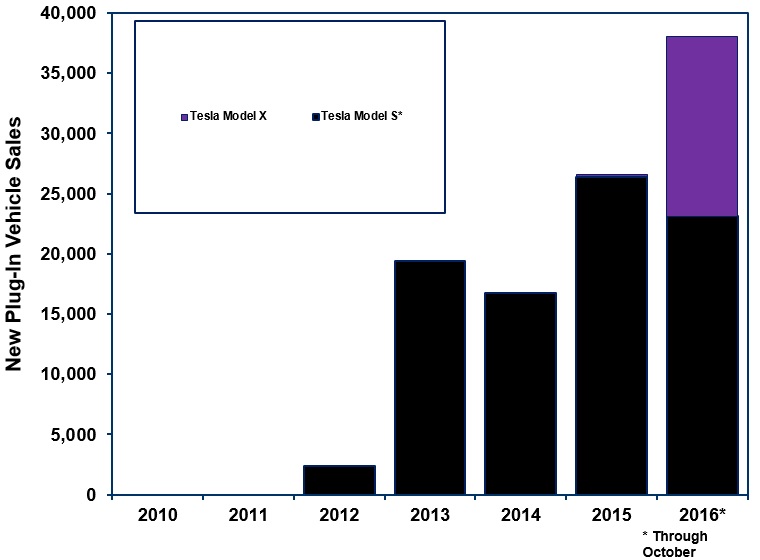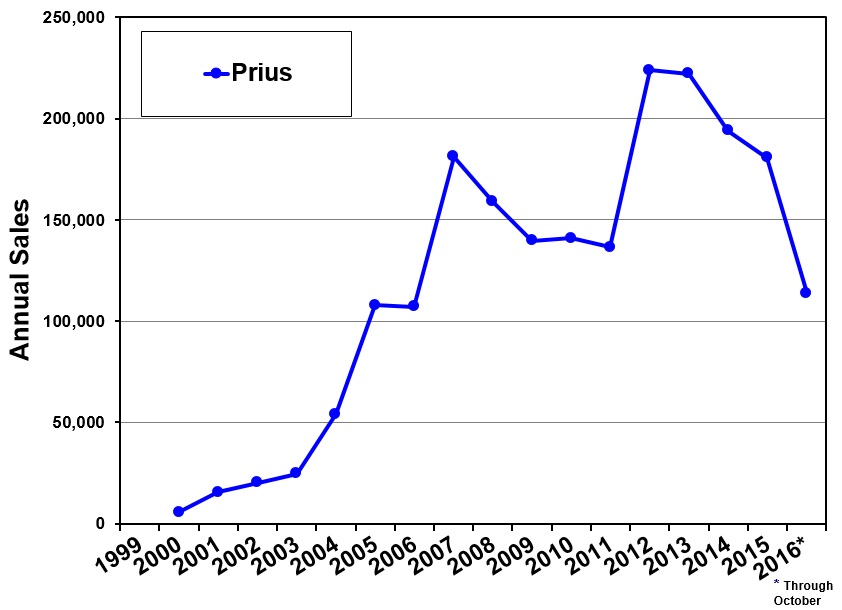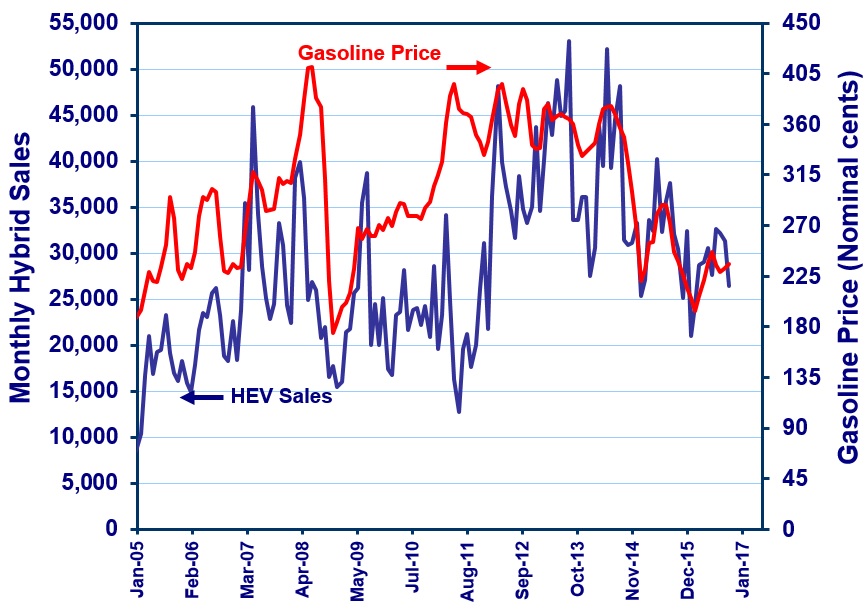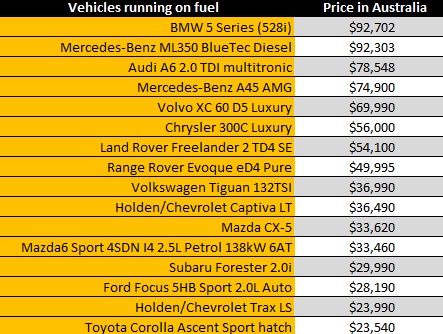Electric vehicles: Sales trend goes into reverse
Last week the Federal Chamber of Automotive Industries[i] reported that electric vehicles (EV) and hybrid vehicle annual sales in Australia are on track this year to fall for the first time. Although the sales figures do not include Tesla vehicles, the figures highlight the need for more incentives to purchase EVs in Australia, and the impact of the decline in petrol prices, which could be moving customers away from EVs.
A recent report by Beyond Zero Emissions[ii] argues that a shift to 100 per cent EVs in Australia is both feasible and affordable. Their analysis, however, makes some optimistic assumptions that battery technology progresses at a more rapid rate, maintenance costs for EVs are at the lower end of the spectrum and petrol prices are high.
What is leading to the decline in Australia?
According to automotive industry figures, all-electric Nissan Leaf and hybrid Toyota Prius sales have decreased with 10,679 electric and hybrid cars sold in the first 10 months of 2016, down from 13,271 sold in 2015[iii]. If the rate of sales continues over the final weeks of 2016, the total sales nationwide will be about 3.4 per cent lower than in 2015[iv].
Tesla refuses to release sales figures, but if Australia is following other countries it may be partially filling the sales gap. The US market is seeing a continued increase in sales by Tesla. Tesla has increased its 2016 sales in the US partly due to the new Tesla Model X, while sales of the former best seller the Toyota Prius has declined. Figure 1 and 2 shows the sales of the Tesla and Prius in the US from 2010 to 2016.
Figure 1: US New Plug-In Vehicle Sales for Tesla 2010 - 2016

Source: Argonne National Laboratory US, 2016
Figure 2: US Annual Sales of Toyota Prius 2000 - 2016
Source: Argonne National Laboratory USA, October 2016
The lack of incentives to purchase EVs in Australia mean that the price premium remains high. The countries with the two highest market shares, Netherlands and Norway, have implemented a range of incentives benefiting consumers that opt for EVs. In the Netherlands, EVs receive a significant reduction on registration and circulation taxes, while Norway provides strong incentives in the form of registration, tax reductions and, for BEVs, the exemption from value-added tax (VAT), waivers on road tolls and ferries, and access to bus lanes.
In Australia, the ACT is offering luxury vehicles tax breaks and stamp duty exemptions to encourage the take-up of EV’s, while the Greens recently proposed a range of policies to increase the adoption of EVs, including five-years free registration, more public charging infrastructure, incentives for big fleets to buy EVs, and part-funding of a domestic EV industry[v]. The Greens expect these policies will get 31,000 more EVs on the road by 2021, and 330 more charging stations[vi]. The Greens polices however might be difficult to implement. If these policies were to be implemented, the free registration plan, which would also cover compulsory third-party insurance, which would require an agreement from state governments that administer car registration schemes.
Another factor that could be leading to the slowing in sales for EVs is the lower petrol price in recent times. Figure 3 shows the impact of low petrol prices in the US on hybrid vehicles, while in Australia petrol prices have been declining since 2013, albeit to a lesser extent.
Figure 3: US Gasoline Price vs HEV Sales 2005 - 2016
Source: Argonne National Laboratory USA, 2016
Table 1: Australian National average petrol prices 2013 - 2016
Source: Australian Institute of Petroleum, 2016
Unless there are more incentives in Australia and while petrol prices continue to remain low, customers are unlikely to be encouraged to purchase EVs in the current environment. Table 2 and 3 below show the cost of EVs in comparison to vehicles running on petrol. Customers are generally able to purchase a luxury car running on petrol in comparison to a standard EV for about the same price.
Table 2: Price and range of EVs in Australia
Source: Beyond Zero Emissions, “Zero Carbon Australia – Electric Vehicles”, 2016
Table 3: Price of a sample of motor vehicles running on petrol
Source: Federal Chambers of Automotive Industries website, https://www.fcai.com.au/specification, November 2016
What does the future hold for electric vehicles?
Bloomberg New Energy Finance’s has forecast a boom in EV sales around the world and as them displacing about 8 million barrels a day of oil demand by 2035[vii]. This comes at a time when four of the world’s biggest cities, Paris, Madrid, Athens and Mexico City are to ban diesel vehicles from their city centres within the next decade to tackle air pollution. The city authorities will subsequently work with national governments and manufacturers to promote EVs and cleaner transport[viii].
In Australia, Beyond Zero Emissions recent report on Zero Carbon Australia Electric Vehicles claims that a shift to 100 per cent EVs in Australia is both feasible and affordable[ix]. The analysis highlights that urban travel is well suited to EVs, and argues that polices which make it more convenient for Australians to use non-car transport modes, such as public transport and walking and car-share schemes will allow more Australians to avoid the costs of individual car ownership. This in turn would reduce the costs of a shift to 100 per cent EVs[x] and reduce the number of vehicles on the road that would need to be replaced with EVs.
Despite the encouraging projections for Australian EV sales the Beyond Zero Emissions report does make a number of optimistic assumptions, which include that car and battery technology progress at a more rapid rate, maintenance costs for EVs are at the lower end and that petrol prices move towards the higher end of projections.
[i] The Australian, 2016, “Electric and hybrid vehicle sales stuck in a pothole”, http://www.theaustralian.com.au/business/electric-and-hybrid-vehicle-sales-stuck-in-a-pothole/news-story/53bc81fa1bbd253a34eb0477323b4843
[ii] Beyond Zero Emissions, 2016, “Zero Carbon Australia – Electric Vehicles”
[iii] ibid
[iv] ibid
[v] The Greens, 2016, “Greens announce plan to encourage electric vehicle uptake”, http://greens.org.au/news/vic/greens-announce-plan-encourage-electric-vehicle-uptake
[vi] ibid
[vii] The Guardian, 2016, “Four of world's biggest cities to ban diesel cars from their centres”, https://www.theguardian.com/environment/2016/dec/02/four-of-worlds-biggest-cities-to-ban-diesel-cars-from-their-centres
[viii] Bloomberg, 2016, “Electric Cars May Take an OPEC-Sized Bite from Oil Use”, https://www.bloomberg.com/news/articles/2016-12-03/electric-cars-could-take-an-opec-sized-bite-from-oil-demand
[ix] Beyond Zero Emissions, 2016, “Zero Carbon Australia – Electric Vehicles”
[x] ibid
Related Analysis
Consumer Energy Resources: The next big thing?
The Consumer Energy Resources Roadmap has just been endorsed by Energy and Climate Change Ministers. It is considered by government to be the next big reform for the energy system and important to achieving the AEMO’s Integrated System Plan (ISP). Energy Minister, Chris Bowen, recognises the key will be “making sure that those consumers who have solar panels or a battery or an electric vehicle are able to get maximum benefit out of it for themselves and also for the grid”. There’s no doubt that will be important; equally there is no doubt that it is not simple to achieve, nor a certainty. With the grid intended to serve customers, not the other way around, customer interests will need to be front and centre as the roadmap is rolled out. We take a look.
Australia’s workforce shortage: A potential obstacle on the road to net zero
Australia is no stranger to ambitious climate policies. In 2022, the Labor party campaigned on transitioning Australia’s grid to 82 per cent renewable energy by 2030, and earlier this year, Prime Minister Anthony Albanese unveiled the Future Made in Australia agenda, a project which aims to create new jobs and opportunities as we move towards a net zero future. While these policies have unveiled a raft of opportunities, they have also highlighted a major problem: a lack of skilled workers. Why is this a problem? We take a closer look.
Made in Australia: The Solar Challenge
While Australia is seeking to support a domestic solar industry through policy measures one constant question is how Australia can hope to compete with China? Australia currently manufactures around one per cent of the solar panels installed across the country. Recent reports and analysis highlight the scale of the challenge in trying to develop homegrown solar manufacturing, as does the example of the US, which has been looking to support its own capabilities while introducing measures to also restrict Chinese imports. We take a look.
Send an email with your question or comment, and include your name and a short message and we'll get back to you shortly.



